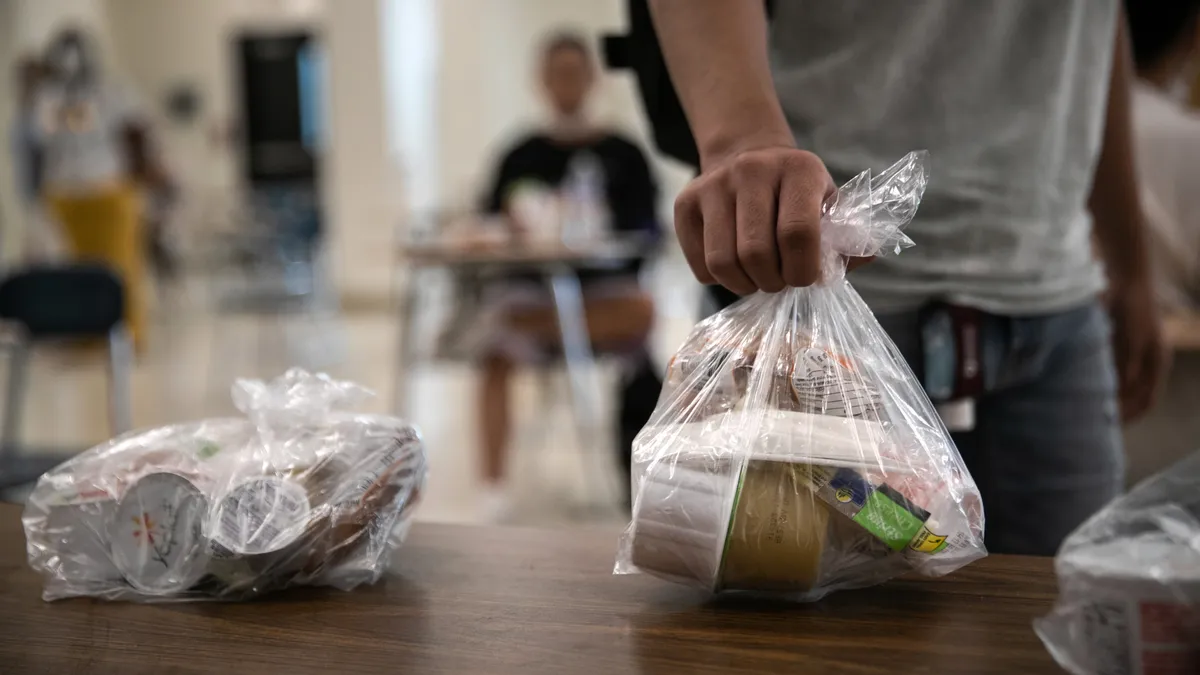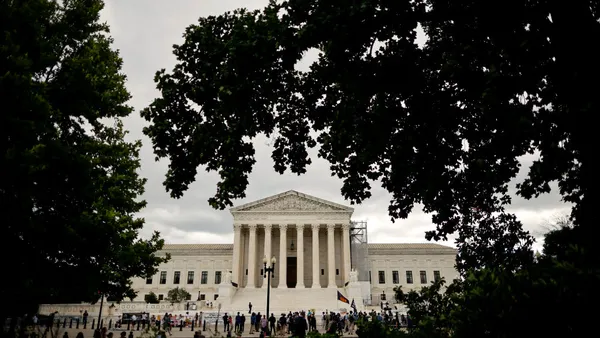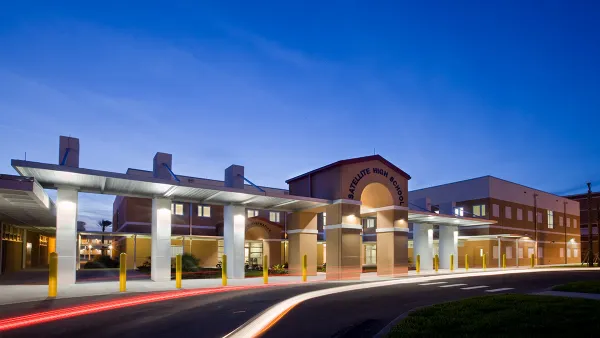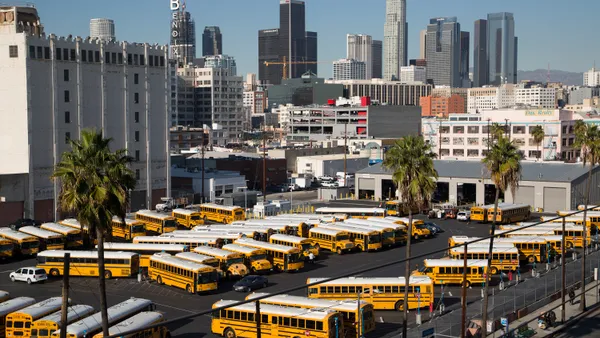Dive Brief:
- Between 2021 and 2022, the percentage of middle and high school students who said they would “very likely” and “somewhat likely” eat school meals increased from 61% to 86%, according to survey results released this month by nonprofit No Kid Hungry that show secondary students are warming up to school meals.
- The two top motivating factors drawing students to eat a school meal are knowing the food served is something they enjoy and whether meals came at no cost to them, the survey of 1,000 secondary students, conducted in May, found.
- For students, 64% said they were “much more likely” to eat a school meal if the dish includes food they know they like, while 28% said they were “somewhat likely” to be swayed by that factor, and 6% said it “makes no difference.” If a school serves free meals, 59% of students said they are “much more likely” to partake, 26% said they were “somewhat more likely,” and 12% said “it makes no difference.”
Dive Insight:
As more students returned to in-person learning during the 2021-22 school year, the move away from pandemic-era remote learning “made a huge difference” for student participation in school meal programs, the report said.
The study also illuminates the potential influence universal school meal policies can have on a student’s choice to eat a school meal. Data released in September by the U.S. Department of Agriculture shows food insecurity among households with children dropped by 2.3 percentage points between 2020 and 2021. During that time, universal school meals were available nationwide via a waiver granted by Congress at the start of the COVID-19 pandemic.
At a White House Conference on Hunger, Nutrition and Health in September, President Joe Biden highlighted the need for a dedicated pathway to establishing universal school meals and permanently extending the child tax credit.
Colorado joined a handful of states that have their own universal school meal policies when voters approved a state referendum this month to provide free meals to all students.














